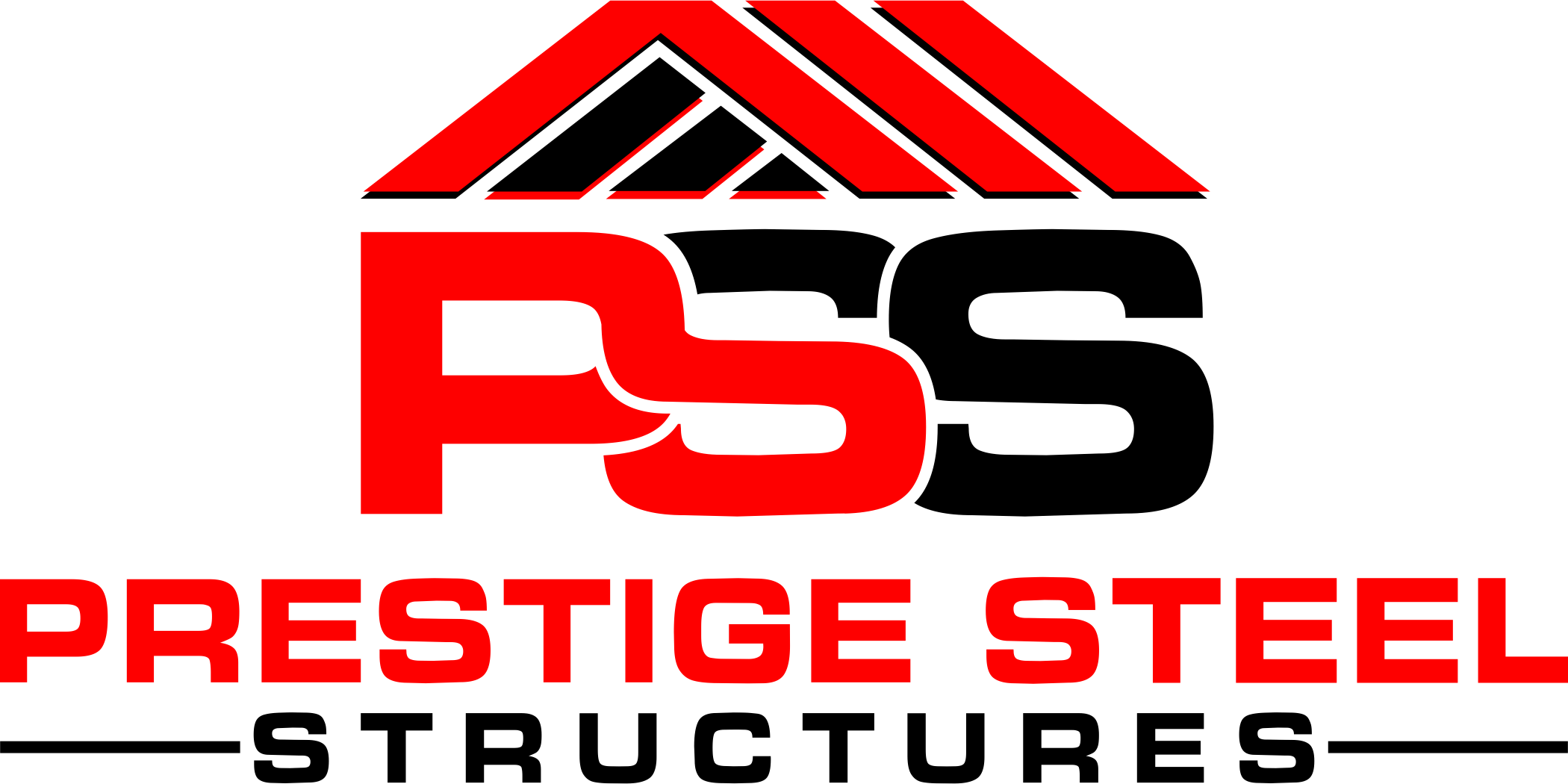Metal buildings offer a durable and cost-effective solution for various needs, from storage and workshops to commercial spaces and agricultural buildings. However, financing a metal building can be a complex process with varying loan terms. This guide explores the different financing options available and the factors influencing loan durations for metal buildings.
Factors Affecting Loan Duration
This section delves into the crucial factors that influence the duration, or repayment period, of your loan for a metal building. Understanding these factors empowers you to make informed decisions when choosing a financing option.
Borrower Creditworthiness
- Importance of Credit Score for Loan Approval and Terms: Your credit score acts as a financial report card, reflecting your history of borrowing and repaying debt. Lenders rely heavily on this score to assess your creditworthiness, which is your ability to repay the loan. A higher credit score indicates a lower risk of default for the lender, translating to better loan terms, including potentially longer durations.
- Minimum Credit Score Requirements for Different Loan Options: The minimum credit score requirement varies depending on the loan type. Traditional loan options like term loans and SBA loans typically require a higher credit score (often in the 680-740 range or higher). On the other hand, alternative financing options like vendor financing might have more flexible credit score requirements, but may come with higher interest rates or shorter terms.
- Impact of Credit History on Loan Duration: Beyond the credit score itself, your credit history plays a role. A history of on-time payments, responsible credit management, and low credit utilization (the amount of credit used compared to the total limit) can positively influence loan duration. Conversely, late payments, defaults, or a high credit utilization ratio can lead to shorter loan terms or even loan denial.
Loan Amount
- Relationship Between Loan Amount and Loan Duration: Generally, the larger the loan amount for your metal building, the shorter the loan duration lenders are likely to offer. This is because larger loans pose a greater risk for the lender. To mitigate this risk, they might restrict the loan term to recover their investment faster.
- Shorter Terms for Larger Loans Due to Risk Management: Lenders want to ensure they get their money back within a reasonable timeframe. With a larger loan, spreading the repayment over a longer period increases the risk of unforeseen circumstances affecting your ability to repay. Therefore, lenders might offer shorter terms (e.g., 5-7 years) for larger loans associated with expensive metal buildings.
- Potential for Longer Terms with Smaller Loan Amounts: For smaller loan amounts financing a more basic metal building, lenders might be more flexible with loan durations. Shorter terms (3-5 years) might still be available, but depending on your creditworthiness, you could potentially qualify for longer terms (7-10 years) that offer lower monthly payments.
Project Complexity
- How Complex Projects Can Influence Loan Duration: The complexity of your metal building project can impact the loan duration. Projects requiring significant construction work beyond the simple installation of a prefabricated building might necessitate a longer loan term.
- Longer Terms for Projects Requiring Construction Financing: Financing the construction of a custom metal building often involves construction loans. These loans typically have shorter terms (12-18 months) to cover the construction period. Once construction is complete, the construction loan can be refinanced into a permanent loan with a longer term (10-20 years) for repayment of the total cost.
- Shorter Terms for Financing Prefabricated Metal Buildings: Prefabricated metal buildings, which arrive pre-engineered and ready for assembly, generally require less complex financing. Loan durations for financing these buildings can be shorter (5-10 years) due to the streamlined nature of the project and lower perceived risk for the lender.
Down Payment
- Significance of Down Payment for Loan Approval and Terms: The down payment you make on your metal building loan represents a portion of the total cost paid upfront. A larger down payment demonstrates your financial commitment to the project and reduces the lender’s risk. This can significantly influence loan approval and potentially lead to a longer loan duration.
- Larger Down Payments Allowing for Longer Loan Durations: With a larger down payment (e.g., 20% or more of the total cost), the lender is financing a smaller portion of the project. This reduces their risk and allows them to offer a longer loan term to spread out the remaining loan amount, potentially making monthly payments more manageable.
- Lower Down Payments Potentially Leading to Shorter Terms: A smaller down payment (e.g., 10% or less) means the lender is financing a larger portion of the project. This increases their risk and might lead them to offer a shorter loan term to recoup their investment faster. However, some lenders might still offer a reasonable loan term with a lower down payment, but potentially at a higher interest rate.
Interest Rates
- Impact of Interest Rates on Loan Duration and Affordability: Interest rates are the fees charged by the lender for borrowing money. They significantly impact the total cost of your loan and influence the choice of loan duration. Lower interest rates generally translate to lower monthly payments, potentially allowing you to qualify for a longer loan term to spread out the repayment. However, a longer term also means you’ll pay more interest over time.
- Trade-off Between Shorter Terms with Lower Interest Rates and Longer Terms with Higher Interest Rates: The ideal scenario is to find a loan with both a favorable interest rate and a comfortable loan duration. However, there’s often a trade-off involved. Shorter loan terms typically come with lower interest rates because the lender recovers their money faster. Conversely, longer loan terms often have higher interest rates as the lender compensates for the extended repayment period.
Additional Considerations When Choosing Loan Duration:
- Prepayment Penalties: Some loans come with prepayment penalties, which are fees charged if you pay off the loan early. This can be a factor when considering loan duration. A shorter term might be more appealing if you plan to pay off the loan quickly to avoid prepayment penalties. However, a longer term offers more flexibility if prepayment isn’t a priority.
- Matching Loan Duration with Building Use: Consider your planned use for the metal building when choosing the loan duration. If you intend to use the building for a long-term business operation, a longer loan term might be ideal to spread out the cost over its lifespan. Conversely, if the building is for a temporary need, a shorter loan term might be more suitable.
Remember: It’s crucial to compare loan offers from multiple lenders to find the best combination of interest rate, loan duration, and overall loan terms that align with your financial situation and project needs. Consulting with a financial advisor experienced in business loans can provide valuable guidance throughout the financing process.
Financing Options for Metal Buildings
Financing a metal building empowers you to acquire the necessary space for your needs without a significant upfront investment. This section explores various financing options available to navigate this process effectively.
Traditional Loan Options
Traditional loan options are offered by banks, credit unions, and other established lenders. These loans provide a structured financing framework with clear terms and conditions.
Term Loans
Definition and characteristics: Term loans are a common financing option for metal buildings. They are a type of installment loan with a fixed interest rate and a set repayment period (loan duration). You borrow a specific amount upfront and make fixed monthly payments over the loan term until it’s fully repaid. Term loans often require good creditworthiness and can be secured or unsecured. Secured term loans use the metal building itself or other assets as collateral, potentially leading to lower interest rates.
Loan durations for term loans (3-12 years): Term loan durations for metal buildings typically range from 3 to 12 years. The specific duration offered depends on several factors (discussed later). However, shorter terms (3-5 years) might be more suitable for smaller metal buildings or those with a temporary use case. Conversely, longer terms (7-12 years) can be beneficial for spreading out the cost of larger or permanent metal buildings.
Factors affecting term loan durations: Several factors influence the loan duration offered for a term loan on a metal building. These include:
- Borrower creditworthiness: A strong credit score (typically above 680) can lead to longer loan terms as it demonstrates your ability to repay the loan.
- Loan amount: Larger loan amounts for expensive metal buildings might have shorter terms due to increased risk for the lender.
- Project complexity: Projects requiring significant construction beyond installing a prefabricated building might necessitate a shorter term or a separate construction loan followed by a permanent term loan.
Small Business Administration (SBA) Loans
Overview of SBA loan programs: The Small Business Administration (SBA) is a government agency that offers loan programs specifically designed for small businesses. These programs can be a valuable resource for financing a metal building needed for your business operations. Popular SBA loan options for metal buildings include the 7(a) loan program and the 504 loan program.
Eligibility requirements for SBA loans: Eligibility requirements for SBA loans vary depending on the specific program. Generally, you’ll need to be a for-profit business operating in the US, have a viable business plan, and demonstrate good character and credit history. The SBA website provides detailed information on eligibility criteria for each program.
Loan durations for SBA loans (typically 7-10 years): SBA loans for metal buildings typically offer longer loan durations compared to traditional term loans. This can range from 7 to 10 years, making them suitable for financing larger or more complex metal building projects. However, the application process for SBA loans can be more involved than for traditional term loans.
Alternative Financing Options
Beyond traditional loans, alternative financing options exist for acquiring a metal building. These might be suitable depending on your specific circumstances and creditworthiness.
Vendor Financing
Definition and benefits of vendor financing: Vendor financing is a financing option offered directly by some metal building vendors. They essentially act as the lender, providing a loan to cover the cost of the building itself. This can be convenient as it streamlines the financing process and allows you to bundle the building purchase and financing into one transaction.
Loan durations offered by metal building vendors (variable, often shorter than traditional loans): Loan durations for vendor financing can vary significantly depending on the vendor and the specific agreement. They are often shorter than traditional loans, ranging from 2 to 7 years. This might be due to the vendor’s desire to recoup their investment faster.
Considerations for vendor financing (interest rates, terms): While convenient, vendor financing might come with higher interest rates compared to traditional loans. Additionally, the loan terms might be less flexible, with limited options for down payments or prepayment penalties. Carefully review the terms and compare them to other financing options before opting for vendor financing.
Rent-to-Own Agreements
Explanation of rent-to-ownership for metal buildings: Rent-to-own agreements for metal buildings offer a way to gain access to a building while working towards ownership. You essentially “rent” the building for a set period (typically 3-10 years) with a portion of each payment going towards ownership. At the end of the term, you have the option to purchase the building for a predetermined price.
Typical durations for rent-to-own agreements (3-10 years): Rent-to-own agreements for metal buildings typically have durations ranging from 3 to 10 years. The specific duration depends on the agreement with the vendor and the overall cost of the building.
Advantages and disadvantages of rent-to-own (ownership transfer, potential higher costs):
Advantages
- Gain access to a building without a large upfront investment: Rent-to-own can be attractive if you lack the capital for a down payment on a traditional loan. It allows you to start using the building while gradually building equity through your payments.
- Potential for flexible payment structures: Some rent-to-own agreements might offer flexible payment structures, allowing you to adjust payments based on your seasonal income fluctuations.
Disadvantages
- Potential higher overall cost: Rent-to-own agreements often have higher total costs compared to traditional financing options. This is because you’re essentially paying rent plus building equity over time.
- Ownership uncertainty until the end of the term: You don’t own the building until you exercise the purchase option at the end of the agreement. There’s a risk that unforeseen circumstances might prevent you from purchasing the building at that time.
Cash-Out Refinance
How a cash-out refinance works for metal buildings: A cash-out refinance can be an option if you own land with existing equity. This type of refinance allows you to tap into the equity in your property to access funds for financing a metal building. You essentially replace your existing mortgage with a new, larger loan that covers your existing mortgage balance and provides additional funds for the metal building.
Eligibility requirements and credit score considerations: Eligibility for a cash-out refinance depends on the lender’s criteria and your existing mortgage terms. Generally, you’ll need to have sufficient equity in your property (typically at least 20%) and a good credit score (above 660) to qualify.
Loan durations for cash-out refinances (based on underlying mortgage): The loan duration for a cash-out refinance is typically based on the terms of your new mortgage. These terms can vary depending on the lender and your creditworthiness, but they often range from 15 to 30 years. This can be a beneficial option for spreading out the repayment for a metal building while leveraging existing property equity.
Choosing the Right Financing Option:
Selecting the most suitable financing option for your metal building requires careful consideration of several factors. These include:
- Your creditworthiness: A strong credit score opens doors to more favorable loan terms and potentially longer durations.
- Project cost and complexity: Larger or more complex projects might require longer loan durations for repayment.
- Desired down payment: A larger down payment can influence loan approval, potentially leading to longer terms with traditional loan options.
- Financial goals: Consider your long-term financial goals and how the loan duration aligns with your repayment strategy.
Remember: It’s crucial to compare financing options from multiple lenders and vendors. This allows you to negotiate the best possible interest rate, loan term, and overall loan structure that aligns with your specific needs and financial situation. Consulting with a financial advisor experienced in business loans can provide valuable guidance throughout the financing process for your metal building project.
Additional Considerations
Financing a metal building requires careful planning beyond simply securing a loan. This section explores additional crucial factors to consider for a smooth and successful financing experience.
Prepayment Penalties
Definition and Potential Implications of Prepayment Penalties: A prepayment penalty is a fee charged by the lender if you pay off your loan early (before the scheduled end date). This penalty is typically calculated as a percentage of the remaining loan balance. For example, a 3% prepayment penalty on a $100,000 loan with $50,000 remaining balance would incur a $1,500 fee if you pay off the loan early.
Importance of Checking for Prepayment Penalties Before Choosing a Loan: Not all loans have prepayment penalties. However, it’s essential to check the loan terms carefully before signing any agreements. Knowing if a prepayment penalty exists and its associated cost can significantly impact your financing decision.
Strategies to Minimize the Impact of Prepayment Penalties: There are a few ways to minimize the impact of a prepayment penalty:
- Negotiate a lower prepayment penalty: If possible, try to negotiate a lower prepayment penalty during the loan application process. Some lenders might be willing to offer a lower penalty or a penalty-free window for early repayment during the first few years of the loan.
- Consider the total cost of the loan: Compare the interest rate and total loan cost (including the prepayment penalty) with loans that don’t have a prepayment penalty. If you plan to pay off the loan early, a lower interest rate with a prepayment penalty might still be a better option overall compared to a higher interest rate without a penalty.
- Focus on accelerating payments without full payoff: Instead of aiming for a complete early payoff that triggers the penalty, consider making larger monthly payments or additional lump sum payments to reduce the outstanding balance faster. This can still help you build equity and potentially save on interest paid over the loan term without incurring the prepayment penalty.
Tax Implications
Potential Tax Benefits Associated with Financing a Metal Building: Financing a metal building for your business can offer some potential tax benefits. These benefits depend on how you use the building and the specific tax laws in your area. However, some potential tax advantages include:
- Depreciation deductions: The metal building can be considered business property, allowing you to deduct a portion of its cost from your taxes over its useful life (typically 20-35 years).
- Interest expense deduction: The interest you pay on your loan for the metal building might be tax-deductible as a business expense.
Importance of Consulting a Tax Advisor for Specific Tax Implications: Tax laws can be complex and subject to change. To understand the specific tax implications associated with financing a metal building, it’s highly advisable to consult with a qualified tax advisor. They can analyze your specific situation and help you maximize potential tax benefits related to your metal building loan.
Depreciation Deductions and Other Tax Considerations: Beyond depreciation deductions and interest expense deductions, your tax advisor can explore other potential tax considerations. This might involve property taxes on the building, deductions for any building improvements, and potential tax implications of selling the building in the future.
Long-Term Use Plan
How Your Intended Use of the Metal Building Affects Loan Selection: The way you plan to use your metal building can influence your choice of financing options and loan duration. Consider these factors:
- Short-term use: If you need the metal building for a temporary purpose (e.g., construction project), a shorter loan term (3-5 years) might be suitable.
- Long-term business use: For a permanent business operation, a longer loan term (7-12 years or even longer) can be beneficial, allowing you to spread out the cost over the expected lifespan of the building.
- Investment property: If the metal building is an investment property you plan to rent out, consider loan terms that align with your projected rental income and ensure sufficient cash flow to cover loan payments.
Matching Loan Duration with the Planned Lifespan of the Building: Choosing a loan duration that aligns with the expected lifespan of the building can be a wise strategy. This ensures you’ll have the loan fully repaid by the time the building reaches the end of its useful life.
Selecting Longer Terms for Buildings with Long-Term Use Purposes: For metal buildings intended for long-term use (e.g., storage facilities, workshops), opting for a longer loan term can provide several benefits:
Lower monthly payments: A longer loan term translates to lower monthly payments, which can be easier to manage for your ongoing business operations or rental income generated from the building.
Improved cash flow: Lower monthly payments free up more cash flow for other business needs or potential reinvestment opportunities.
Focus on building equity: With consistent on-time payments over a longer duration, you’ll build equity in the metal building at a steady pace, increasing its value over time.
Early Payment Benefits
Advantages of Making Consistent and Early Loan Payments: Making consistent and even early payments on your metal building loan offers several advantages:
- Reduced interest costs: The sooner you pay down the principal amount, the less interest you accrue over the loan term. This can lead to significant savings on the total cost of the loan.
- Faster equity building: Every on-time payment contributes to building equity in the metal building. Early payments accelerate this process, giving you ownership rights to the building faster.
- Improved credit score: A consistent history of on-time loan payments positively impacts your credit score. This can be beneficial for securing future loans with better terms and interest rates.
Strategies for Establishing a Consistent Payment Plan: Developing a consistent payment plan ensures you stay on top of your loan obligations and reap the benefits of early payments. Here are some strategies:
- Set up automatic payments: Enroll in automatic loan payments to avoid missed payments due to forgetfulness.
- Consider bi-weekly payments: Making bi-weekly payments instead of monthly payments can effectively reduce the loan term and save on interest. This is because you end up making one additional payment per year.
- Round up your payments: Round up your monthly payment amount to the nearest hundred or thousand dollars. This small increase can significantly accelerate your loan payoff without a major impact on your budget.
Remember: Effective financial planning is crucial for a successful metal building project. Consider all the factors discussed in this guide when making financing decisions. Consulting with financial advisors and tax professionals can provide valuable insights and ensure you choose the most suitable financing option for your specific needs. By carefully considering these aspects, you can secure financing that empowers you to acquire the metal building you need while optimizing your financial well-being in the long run.
Conclusion
Recap of Key Points Regarding Financing Durations for Metal Buildings
This guide has explored the various factors that influence the financing duration for your metal building project. Here’s a quick recap of the key takeaways:
- Loan Options Impact Duration: Traditional loan options like term loans and SBA loans typically offer a range of durations (3-12 years or even longer for SBA loans). Alternative financing options like vendor financing might have shorter terms (2-7 years) due to the lender’s desire for quicker repayment.
- Creditworthiness Matters: A strong credit score (typically above 680) allows you to qualify for longer loan durations as it demonstrates your ability to repay the loan. Conversely, a lower credit score might limit your options to shorter terms.
- Loan Amount Matters: Larger loan amounts for expensive metal buildings often translate to shorter loan terms due to increased risk for the lender. Smaller loan amounts might allow for longer terms, making monthly payments more manageable.
- Project Complexity Plays a Role: Complex projects requiring significant construction beyond installing a prefabricated building might necessitate a shorter loan term or a separate construction loan followed by a permanent loan. Prefabricated buildings often qualify for shorter loan durations due to the streamlined nature of the project.
- Down Payment Considerations: A larger down payment demonstrates your financial commitment and reduces the lender’s risk. This can lead to longer loan durations, spreading out the remaining loan amount into smaller monthly payments.
- Interest Rates and Trade-Offs: Lower interest rates generally translate to lower monthly payments, potentially allowing for a longer loan term. However, a longer term means you’ll pay more interest over time. Choosing the right balance between interest rate and loan duration is crucial.
Importance of Considering Individual Needs and Project Specifics
There’s no “one-size-fits-all” solution when it comes to financing durations for metal buildings. The ideal loan term depends on your unique circumstances and project details. Here are some additional factors to consider:
- Your financial goals: Are you prioritizing lower monthly payments or paying off the loan as quickly as possible? A longer term offers lower payments but extends the interest-paying period. Conversely, a shorter term requires higher payments but minimizes interest costs.
- Cash flow management: Consider your projected income or cash flow from the building’s use. Can you comfortably manage higher monthly payments associated with a shorter term, or do you require lower payments offered by a longer term?
- Exit strategy: Do you plan to own the building for the long term, or is there a possibility of selling it in the future? Matching the loan term to your planned ownership period can help with financial planning.
Financing a metal building is a significant financial decision. Consulting with qualified professionals can provide valuable guidance throughout the process:
- Financial advisors: A financial advisor experienced in business loans can analyze your financial situation, project goals, and risk tolerance. They can recommend suitable loan options and durations that align with your long-term financial objectives.
- Lenders: Different lenders offer varying loan terms and interest rates. Contacting multiple lenders allows you to compare options and negotiate for the most favorable terms and loan duration that meets your needs.
Beyond Loan Duration: Additional Considerations for Financial Success
While securing a loan with a suitable duration is crucial, remember that financing a metal building requires a holistic approach to financial planning. Here are some additional considerations to ensure your long-term financial success:
- Budgeting for Ongoing Costs: Factor in not just loan payments, but also ongoing maintenance costs, property taxes (if applicable), and potential insurance needs for your metal building. Create a realistic budget that accounts for these expenses to avoid financial strain down the line.
- Building Value Over Time: As you make consistent loan payments and maintain the building, its value will appreciate. This equity growth can be advantageous if you decide to sell the building in the future, potentially generating a return on your investment.
- Refinancing Strategies: As your financial situation and market conditions evolve, refinancing your loan might be an option. This could potentially lead to a lower interest rate or a longer loan term, depending on your circumstances. Consulting with a financial advisor can help you determine if refinancing is a suitable strategy in the future.
By carefully considering these additional factors and making informed financing decisions, you can ensure that your metal building contributes to your overall financial goals and empowers your business or personal endeavors for years to come.
Final Takeaway: Informed Decision-Making for Financing Your Metal Building
By understanding the factors influencing loan durations, considering your individual needs, and seeking professional guidance, you can make informed decisions when financing your metal building project. Choosing the right loan term empowers you to acquire the necessary space for your business operations or personal needs while optimizing your financial well-being in the long run. Remember, a well-planned financing strategy can turn your metal-building dream into a successful reality.





